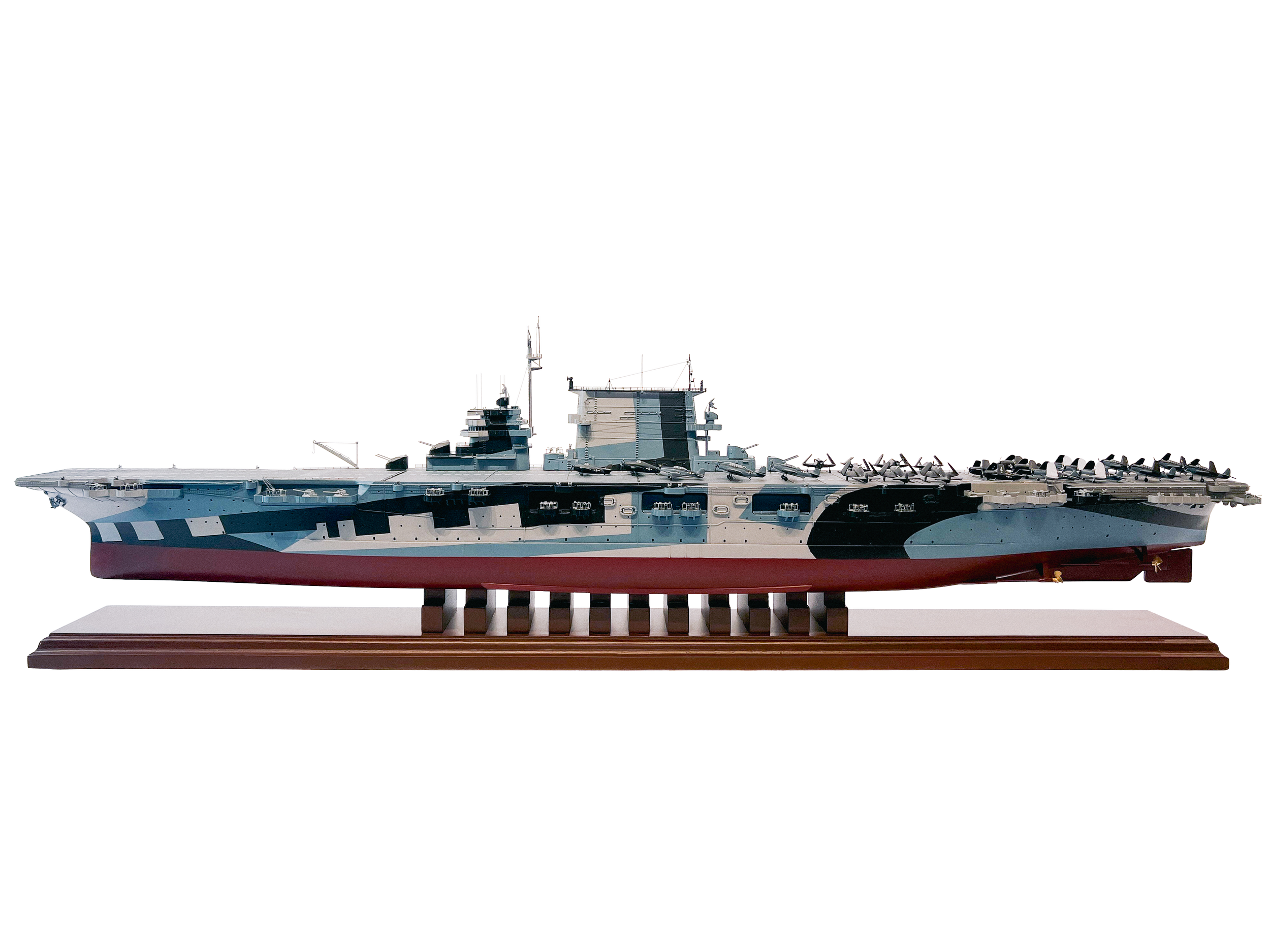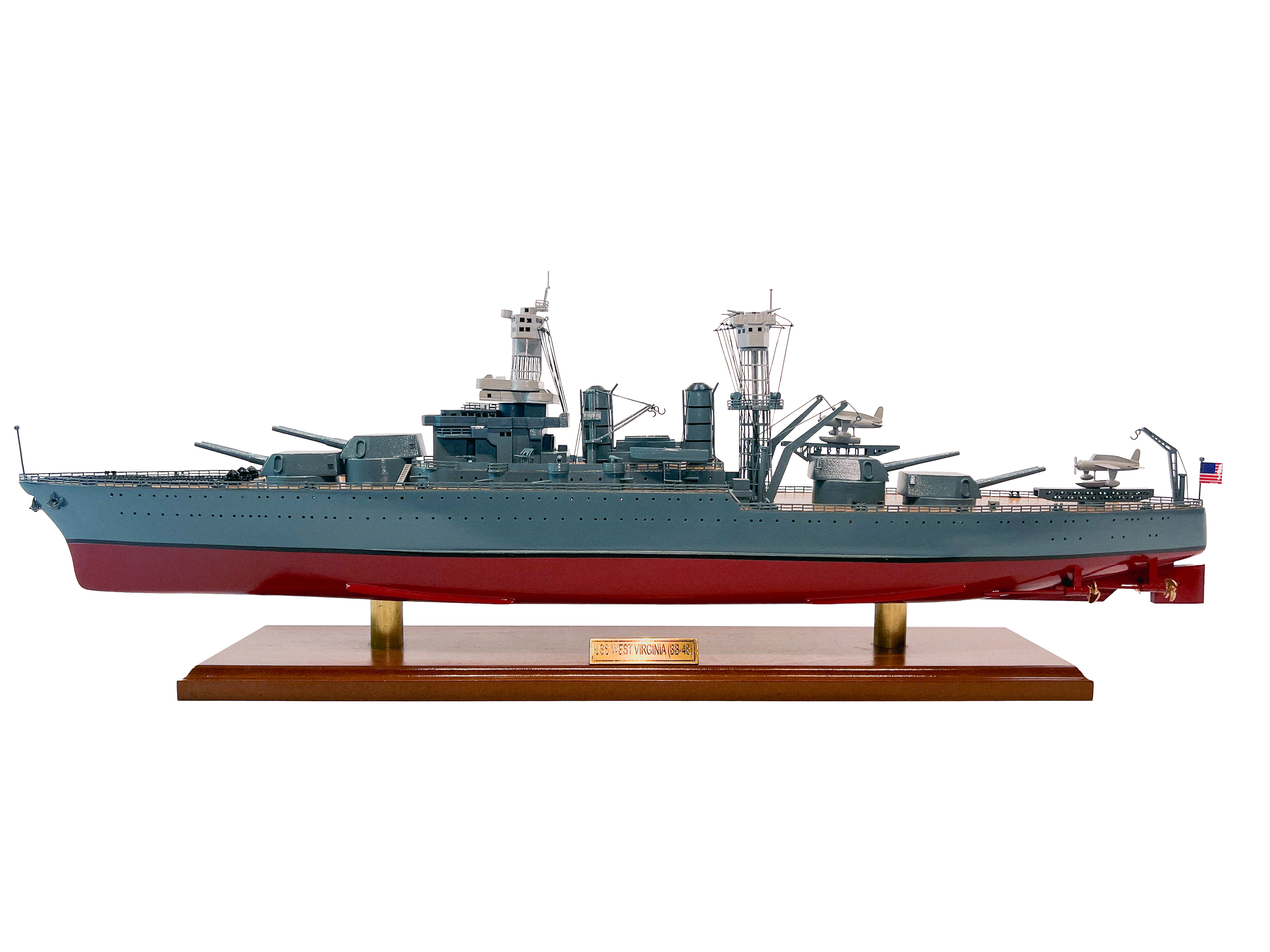zoom in on model
1912 – Present
African Queen
Scale 1/100
Credit: Museum of Military Models, Clyde, Texas. Private Collection of Warren D. Harkins.ON VIEW
General Characteristics
Class and type:
Steamboat
Built:
1912 and 1950
Architect:
Lytham Shipbuilding & Engineering Co
Length: 30 ft
Installed power:
Steam-powered (movie prop)
Diesel engine hidden in the cargo
Description
African Queen (also known as S/L Livingstone) was the name of two boats used in the 1951 movie The African Queen starring Humphrey Bogart and Katharine Hepburn. It was filmed in the Belgian Congo on a tributary of the Congo River, and on the Nile in the Murchison Falls National Park in Uganda. Two boats were used, one in each location. One of the boats is now located in Key Largo, Florida, and on February 18, 1992, was added to the U.S. National Register of Historic Places. The other is located in Jinja, Uganda.
The African Queen in Key Largo, Florida, U.S. This is an image of a place or building that is listed on the National Register of Historic Places in the United States of America. Its reference number is 91001771.US theatrical release poster for the 1951 film The African Queen.Location
99701 Overseas Hwy, Key Largo, Florida 33037
U.S. National Register of Historic Places – Added on February 18, 1992.
NRHP reference No. 91001771film Appearances
Film
The African Queen
The African Queen is a 1951 adventure film adapted from the 1935 novel of the same name by C. S. Forester. The film was directed by John Huston and produced by Sam Spiegel and John Woolf. The screenplay was adapted by James Agee, John Huston, John Collier and Peter Viertel. It was photographed in Technicolor by Jack Cardiff and has a music score by Allan Gray. The film stars Humphrey Bogart (who won the Academy Award for Best Actor, his only Oscar) and Katharine Hepburn with Robert Morley, Peter Bull, Walter Gotell, Richard Marner and Theodore Bikel.
The African Queen was selected for preservation in the United States National Film Registry in 1994, and the Library of Congress deemed it "culturally, historically or aesthetically significant."
Information
Directed by: John Huston
Screenplay by: James Agee, John Huston
Based on: The African Queen 1935 novel by C. S. Forester
Produced by: Sam Spiegel
Starring: Humphrey Bogart, Katharine Hepburn, Robert Morley, Peter Bull, Theodore Bikel, Walter Gotell, Peter Swanwick, Richard Marner
Cinematography: Jack Cardiff
Edited by: Ralph Kemplen
Music by: Allan Gray
Production companies: Horizon Pictures, and Romulus Films
Distributed by: United Artists (US), Independent Film, Distributors (UK)
Release date: December 26, 1951 (Fox Wilshire Theatre)
Running time: 105 minutes
Countries: United States, United Kingdom
Languages: English, German, Swahili
Budget: $1 million
Box office: $10.75 million
Plot
Samuel Sayer and his sister Rose are English Methodist missionaries in German East Africa in August 1914. Their mail and supplies are delivered by a small steamboat named the African Queen, helmed by the rough-and-ready Canadian mechanic Charlie Allnut, whose coarse behavior they stiffly tolerate.
When Charlie warns the Sayers that war has broken out between Germany and Britain, they choose to remain in Kungdu, only to witness German colonial troops burn down the village and herd the villagers away to be pressed into service. When Samuel protests, he is struck by a soldier and soon becomes delirious with fever, dying shortly afterward. Charlie helps Rose bury her brother and they escape in the African Queen.
Charlie mentions to Rose that the British are unable to attack the Germans because of the presence of a large gunboat, the Königin Luise, patrolling a large lake downriver. Rose comes up with a plan to convert the African Queen into a torpedo boat and sink the Königin Luise. After some persuasion, Charlie goes along with the plan.
Charlie encourages Rose to navigate the river by rudder while he tends the engine, and she is emboldened after they pass the first set of rapids with minimal flooding in the boat. When they pass the German fortress, the soldiers begin shooting at them, damaging the boiler. Charlie manages to reattach a pressure hose just as they are about to enter the second set of rapids. The boat rolls and pitches as it goes down the rapids, leading to more severe flooding on the deck. While celebrating their success, Charlie and Rose find themselves in an embrace and kiss. The third set of rapids damages the boat's propeller shaft. They rig up a primitive forge on shore and Charlie straightens the shaft and welds a new blade onto the propeller, allowing the two to set off again.
All appears lost when the boat becomes mired in the mud and dense reeds near the mouth of the river. With no supplies left and short of potable water, Rose and a feverish Charlie pass out, both accepting that they will soon die. Rose says a quiet prayer. As they sleep, torrential rains raise the river's level and float the African Queen into the lake.
Over the next two days, Charlie and Rose prepare for their attack. The Königin Luise returns and Charlie and Rose steam the African Queen out onto the lake in darkness, intending to set her on a collision course. A strong storm strikes, causing water to pour into the African Queen through the torpedo holes. Eventually the boat capsizes, throwing Charlie and Rose into the water. Charlie loses sight of Rose in the storm.
Charlie is captured and taken aboard the Königin Luise, where he is interrogated by German officers. Believing that Rose has drowned, he makes no attempt to defend himself against accusations of spying and the German captain sentences him to death by hanging. Rose is brought aboard the ship just after Charlie's sentence is pronounced. The captain questions her, and Rose proudly confesses the plot to sink the Königin Luise, deciding that they have nothing to lose. The captain sentences her to be executed with Charlie, both as British spies. Charlie asks the German captain to marry them before they are executed. The captain agrees, and after conducting the briefest of marriage ceremonies, is about to carry out the execution when the Königin Luise is rocked by a series of explosions, quickly capsizing. The ship has struck the overturned submerged hull of the African Queen and detonated the torpedoes. The newly married couple is able to escape the sinking ship and swim to safety together.
Humphrey Bogart from the trailer for the film The African Queen.Katharine Hepburn from the trailer for the film The African Queen.Hepburn and Bogart in a publicity still for the film.History & Related Content
History
The Congo boat
This African Queen was a 30-foot steam boat built of riveted sheet iron in 1912 in the United Kingdom for service in Africa on the Victoria Nile and Lake Albert where the movie was filmed in 1950. Originally named Livingstone, she was built for the British East Africa Railway and used from 1912 to 1968. She spent most of her first 50 years in the waters of the Ruki River in the northern Democratic Republic of Congo where she was used to transport hunters, mercenaries, and cargo.
According to an article on its 2012 restoration, the boat was built by Lytham Shipbuilding and Engineering Co., as evidenced by the boiler plate and Lancashire records.
The boat was found in Cairo, Egypt in the 1970s, with coal still in its bilges. Purchased and shipped to the United States, she has had a succession of owners and is currently held in trust. The boat was refurbished in 2012, including installation of an interior steel hull frame and new boiler, and restored to service as a tourist boat.
The Nile boat
The other African Queen was built in 1950 for the film and was discovered by Yank Evans, a Patagonian mechanical engineer who had come across what was left of the vessel while working on the roads in Murchison Falls National Park, Uganda in 1984. "Yank came across a carcass of a steel boat, in the bushes there just left to rot. He asked the locals what this was and they said well that's the African Queen. So he bought it off the National Parks for $1." Evans, who had worked on the boat with his son Billy and gave her a steam engine then stored the boat when he moved to Kenya in 1997 and her new home became a trailer in the garden.
Cam McLeay purchased the Nile African Queen after hearing her story and set to finishing the restorations and getting the boat's original steam engine functioning and in the water. McLeay and his team rebuilt the African Queen's century-old Brady steam engine and replating the hull and replacing over 100 pipes, sourcing parts mostly from the UK but also from within Uganda.
The African Queen in Key Largo, Florida, U.S. This is an image of a place or building that is listed on the National Register of Historic Places in the United States of America. Its reference number is 91001771.The African Queen under a canvas canopy in 2009.The African Queen, June 2020.


































